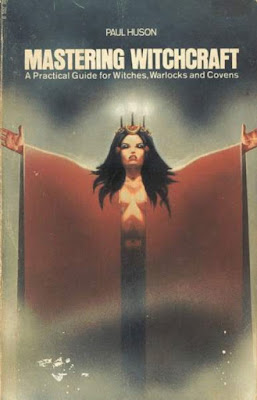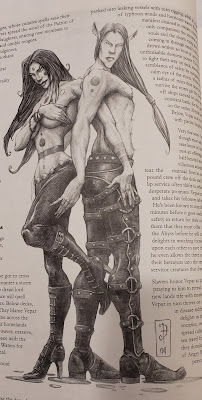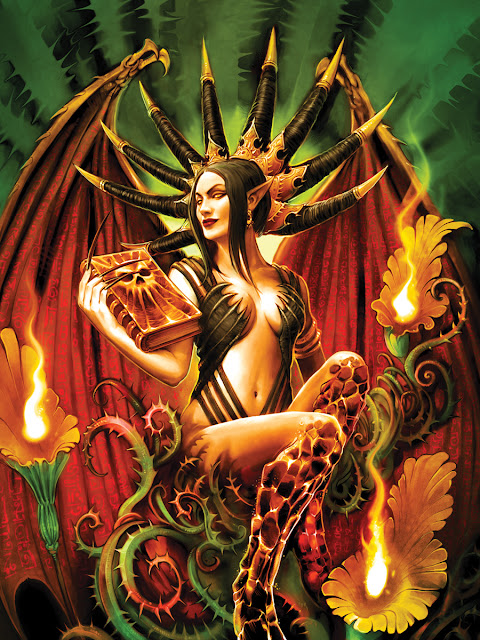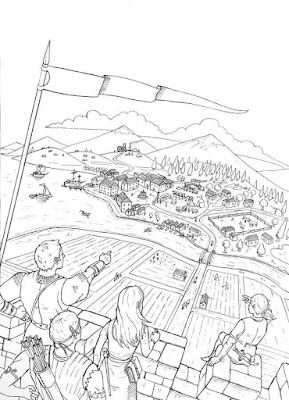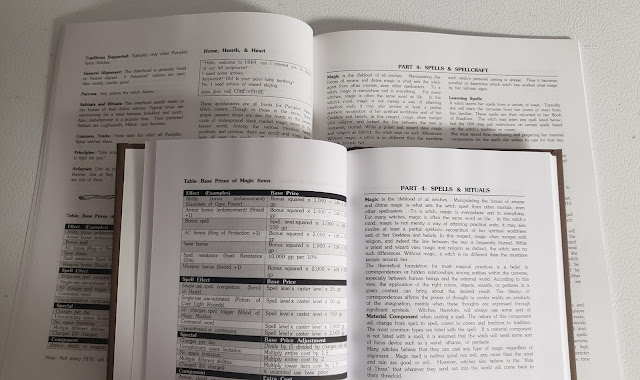
Under the guidance and protection of His Imperial Majesty Emperor Karl-Franz I, the Glorious Empire is a bountiful bastion of civilisation and order, together with its faith in the great gods Sigmar and Ulric, a redoubtable fortress against its many enemies and the forces of Chaos that threaten it from without. Great armies of Orcs, Goblins, and worse—Chaos Warriors, Beastmen, Mutants, and Daemons. Yet there are dangers from within too. Bickering nobles, fumbling and feuding for power and influence undermine both defences and resolve of the greatest and most powerful nation in the Old World, pirates who prey on the shipping of the empire’s mighty rivers and bandits who pick at the weary traveller on its network or roads that bisect the deep swathes of forest, and worse. Numerous cults hide in the shadows, some appearing to be no more than excuses for frowned upon frivolity and debauchery, but all too many dedicated to the Ruinous Powers, those dark gods from which the Winds of Magic do blow and threaten to corrupt the unwary and the ambitious, even as they are studied and harnessed by the Colleges of Magic. The practices and beliefs of such cult threaten mind, body, and soul of the members, twisting them, mutating them, and driving them to spread the reach of Chaos until the Witchfinders act, burn them out and put them to the sword, before covering their activities up. Meanwhile, the citizens labour for themselves and their families and pay their taxes to the Empire for protection by day, drink and gamble and gossip as agitators cry out for better life and the overthrow of some noble or other (or even the Emperor himself—what heresy!) if they can by evening, before retiring to behind closed doors by night, fearful of what stalks the forests, what lies in the village over yonder, what curse a witch may lay upon them, and what Beastmen might catch them unwary on the morrow, rip them limb from limb—or worse! Yet there are some who see there is more to life than mere drudgery. They may never be nobles, but they might make coin enough to get by, they might make a difference in driving off monsters and mutants even as the locals look at them in fear and wonderment, and they might just help keep the Empire safe!
This is the Empire and the Old World, the setting for Warhammer Fantasy Roleplay. The publication of its fourth edition by Cubicle Seven Entertainment is a reminder that once upon a time, Games Workshop published roleplaying games. Chief amongst these was of course Warhammer Fantasy Roleplay, which even thirty years on, remains the definitive British roleplaying game. Its mix of fantasy, European history—the Holy Roman Empire in particular, Moorcockian cosmology, humour, grim and perilous feel, disease and damnation, and mud and shit underfoot, very much set it apart from the fantasy found in other roleplaying games of the time—and arguably since. Perhaps the best expression of those elements is not in the roleplaying game itself, but in what is arguably the greatest British roleplaying campaign ever published—The Enemy Within. Subsequently published by Hogshead Publishing, before returning to Games Workshop via Black Industries with a second edition designed by Green Ronin Publishing, and then by Fantasy Flight Games as a third edition which combined the roleplaying with physical elements such as cards and counters usually found in board games and so was not compatible with either the first or the second editions (although it was still playable as a roleplaying game). Warhammer Fantasy Roleplay, Fourth Edition shares the same setting as the previous editions, but mechanically draws from the first and second editions, remaining a relatively low, percentile driven set of mechanics, designed to do ‘grim and perilous’ roleplaying in a world of mud and blood, Chaos and fear, and desperation and danger. It is a roleplaying game in which minor nobles, dwarf slayers, witch hunters, ex-soldiers, merchants, road wardens, petty wizards, priests to Sigmar and Ulrich, and of course, rat catchers—plus little dog, hold back incursions by the forces of Chaos, run scams, uncover cults and conspiracies, and more, all in the face of intransigence and callousness upon the part of the ruling classes and the churches.
A Player Character in Warhammer Fantasy Roleplay, Fourth Edition has a Species—Human (Reiklander), Halfling, Dwarf, High Elf, or Wood Elf; a Class—Academic, Burgher, Courtier, Peasant, Ranger, Riverfolk, Rogue, or Warrior; and Career, such as Nun, Watchman, Duellist, Hedge Witch, Pedlar, Wrecker, Grave Robber, or Warrior Priest. He has ten attributes—Weapon Skill, Ballistic Skill, Strength, Toughness, Initiative, Agility, Dexterity, Intelligence, Willpower, and Fellowship—expressed as percentages. His Fate and Fortune are linked together as destiny and his luck, and his Resilience is his inner strength and linked to grit through the ‘single word’ Motivation which drives him to act. Skills, both Basic and Advanced, as well as Talents are derived from the character’s Species and Career. Advanced skills are only available to those who have studied or practiced them and require at least one Advance in them to use. An Advance is an improvement of a skill by +1%, and these can be applied to skills and characteristics. Each Class and Career provides trappings and items of equipment. A Player Character also has Ambitions, short term and long. Fulfilling the former will grant an Experience Point bonus, whilst fulfilling the latter might reward an even larger Experience Point reward or even see the Player Character retire! Similarly, the Party of Player Characters will also have its own ambitions.
One notable facet of Warhammer Fantasy Roleplay is that of Careers and how Player Characters can advance through or even change them, and it is no different in Warhammer Fantasy Roleplay, Fourth Edition. Each Career has four levels, presented on the same page, and when a Player Character wants to change Career, he either moves up to the next level of the Career he is in or a completely new one. It costs Experience Points to change a Career, more if the Career is in an entirely different Class. All of the Classes, Careers, Species, and so on, are nicely detailed, including the thoughts of the various Species on other Species and options for Species aspects such as ‘Animosity (Elves)’ for the Dwarfs, which let a player decide rather than adhere to a stereotype.
Character creation in Warhammer Fantasy Roleplay, Fourth Edition—apart from attributes, which are all random—can be random or chosen by the player. If the former, extra Experience Points are awarded to the Player Character, for each stage the player decides to roll and keep the result. The last step process is answering questions about the character’s origins, family life and childhood, why he left home, best friends, greatest desire, and more. This can include adding Psychological Traits like Fear (Snakes), Frenzy, or Hatred (Slavers), primarily for roleplaying opportunities rather than mechanical benefits. The process is not particularly quick, if only because there is a fair amount of information to note down. In general, if rolled, the chances of roll up a non-Human Player Character is slim and certain Careers are unavailable to some Species. For example, the Priest is a Human-only Career, the are no Dwarf or Halfling Wizards, and of course, the Slayer is a Dwarf-only Career.
Sigfreda von Stark is the youngest daughter of House Stark, sister to several older brothers. Where her brothers were taught to fight, she was not allowed to, and her brothers made fun of her. She learned to give as good as she got, and this went from taunting to punches and she gave as good as she got. Forbidden to enlist in the army and despite being married (he avoids her for the black eye she gave him on their wedding night), she applies her muscle and underhand means of applying it to making a living without him or his annoying mother. What she can, she saves for training.
Name: Sigfreda von Stark
Species: Human (Reiklander)
Class: Warrior
Career: Protagonist
Motivation: Greed
Ambition: To beat the snot out of her brothers
Age: 22 Height: 5’ 6”
Eye Colour: Blue Hair Colour: Dark Brown
Weapon Skill 32 Ballistic Skill 33
Strength 38 Toughness 31
Initiative 33 Agility 34
Dexterity 34 Intelligence 35
Willpower 34 Fellowship 27
Wounds: 12
Fate: 3
Resilience: 3
Movement: 4
Skills: Athletics +5, Cool +5, Dodge +5, Endurance +5, Entertain (Taunt) +5, Evaluate +5, Gossip +5, Haggle +5, Intimidate +5, Language (Bretonnian) +3, Language (Wastelander) +3, Lore (Reikland) +3, Melee (Basic) +5, Melee (Brawling) +7
Talents: Acute Sense (Listen), Dirty Fighting, Noble Blood, Savvy, Sixth Sense, Warrior Born
Trappings: Mask, Clothing, Hand Weapon, Dagger, Pouch, Knuckledusters, Leather Jack
Mechanically, Warhammer Fantasy Roleplay, Fourth Edition uses percentile dice. A Simple test is roll against an attribute or skill plus attribute. If the situation requires the Game Master and player to know how well his character did, he rolls a Dramatic Test. This is slightly more complex in that the ‘tens’ value on the dice roll is subtracted from the ‘tens’ value of the skill. This determines the Player Character’s Success Level, which can be positive or negative. The higher it is, the better the outcome, the lower—or more negative—it is, the worse the outcome. Opposed rolls generally compare Success Levels, the Player Character or NPC with more succeeding over the other.
For example, Sigfreda is a hired by a brewery to persuade the landlord of a rough, riverside tavern, Klatt’s Bier Haus, to pay his bills. Her player will roll Sigfreda’s Intimidate plus Strength (42%), which will be opposed by Klatt the landlord’s Cool plus Will Power (32). Sigfreda’s player rolls 23. Subtracting ‘tens’ value of the dice roll, or two, from the ‘tens’ value of the skill value gives two Success Levels. The Game Master rolls 63 for the landlord, which leaves him with minus three Success Levels. Without having to lay a hand on him, Sigfreda has reduced him to a quivering mess, and he quickly apologises, saying that it is not his fault because some local toughs have been taking nearly all takings in protection money. Sigfreda’s player spots an opportunity and asks how much Klatt the landlord would pay to get these toughs off his back…
Melee combat also uses opposed rolls—Weapon Skill versus Weapon Skill if parrying or the Dodge Skill if trying to get out of the way, whereas missile attacks, rolled on Ballistic Skill are Simple Tests. Success Levels not only determine if a Player Character manages to strike his opponent in combat, but also the amount of extra damage inflicted. Damage is determined by a combination of the Success Levels from the attack roll, the weapon, and the Strength Bonus, with armour and the target’s inherent Toughness counting against the incoming damage. If a double is rolled—eleven, twenty-two, thirty-three, and so on—then a critical hit has been made. This can be made when attacking or parrying, and it can even be made when an opponent has rolled more Success Levels than the character’s player. Thus, a character can lose an exchange of blows, but still inflict an effect. In addition, the combat mechanics in Warhammer Fantasy Roleplay, Fourth Edition are designed to have a character build upon success, gaining Advantage when attacking an opponent who is surprised, charging into combat, defeating an important NPC, and so on, gaining a +10 bonus to combat actions each time. This is lost if a Player Character or NPC loses an opposed roll or suffers a wound, but is designed to give a Player Character an edge as he gains momentum in a fight. Both players and Game Master are expected to keep track of Advantage for both the Player Characters and NPCs, the suggestion being that tokens be used where everyone can see them.
Later that morning, the two toughs, Klaus and Karl, call in to take the day’s takings from Klatt’s Bier Haus. As Karl keeps an eye on the door, Sigfreda informs Klaus at the bar that the tavern’s takings are not available and that neither of them is welcome at the establishment. Unfortunately, Sigfreda fails to intimidate him like she did Klatt and Klaus steps in close and asks, “Says who?” “Me—and this mug” she responds and with that she slams the mug of beer into his face. Klaus is no fool and the Game Master gives him a chance of spotting the attack, but fails the Perception Test. Klaus now has the Surprised Condition, which grants Sigfreda a +20% bonus on the Melee (Brawling) Test for her attack. For this one attack, she has a 59% attack chance, opposed by Klaus’ Melee (Brawling) Test of 32%. Sigfreda’s player rolls 22%, which gives her three Success Levels and is a Critical Hit too. The Game Master rolls 98%, which minus six Success Levels! Sigfreda is using an improvised weapon, which means that she inflicts a base of her Strength Bonus (three) plus Success Levels (three) plus weapon base damage (one) plus her one level of Dirty Fighting (one), for a total of eight! In addition, Sigfreda has +1 Advantage.
Normally, the result of the Melee (Brawling) Test would be reversed to determine the location struck, which in this case would be Klaus’ left arm. However, the Critical Hit means it is randomly determined, which is a roll of the 05% and the head! Klaus’ Toughness Bonus of three means the thug suffers five Wounds. Plus, Sigfreda’s player rolls 32% on the Head Critical Wounds table. This means that Klaus suffers two more Wounds, which ignore armour and Toughness, and suffers the Stunned Condition. Until the Game Master can make a successful Endurance Test for Klaus, the thug cannot take an action and is at a penalty to all Tests. In addition, Sigfreda has +1 Advantage. At the end of the round, she is at +2 Advantage. As Klaus wavers, Karl grips his club and rushes towards Sigfreda as she slips her knuckledusters onto her hands.
Combat in Warhammer Fantasy Roleplay, Fourth Edition is designed to have the Player Characters’ fortunes fluctuate back and forth across the battle, as well as encourage their players to be tactical in order to take and maintain Advantage. It covers not simple hand-to-hand melees, but also two-weapon fighting, mounted combat, movement, chases, pulling blows, and more. Damage is not just a case of inflicting as many Wounds as possible, but also Conditions which will be typically inflicted through Critical Wounds. Warhammer Fantasy Roleplay, Fourth Edition has a table for each location, and the results are all brutal. Long time fans of the roleplaying game will be pleased to see the last entry for the Head Critical Wounds table: “Your head is entirely severed from your neck and soars through the air, landing 1d10 feet away in a random direction (see Scatter). Your body collapses, instantly dead.”
However, the Player Characters do have number of factors in their favour. First, they have Fate Points and Fortune Points. Fortune Points grant a Player Character a little luck and allow his player to reroll a failed Test, add a Success Level to a Dramatic Test after it is rolled, and to disregard Initiative order and have the character act when they want. Fate Points are spent to avoid death or completely avoid taking incoming damage. Second, they have Resilience Points and Resolve Points. Resilience Points grant immunity to a Psychological Trait or effect for a round, enable the Player Character to ignore all modifiers from all Critical Wounds for a round, or remove a Condition. Resilience Points are spent to prevent a Player Character from suffering a mutation due to Corruption or to select the result of a Test, which in combat can be right down to location and the Critical Wounds table. These do all give a Player Character an advantage, something to fall back on in an emergency, but mechanically, are four different types of points really necessary? It is cumbersome and difficult to remember what does what. Why not reduce the number of types and increase the costs of what they can do? (Of course, this increases the number of times a player can use the lesser benefit, but this is cumbersome still.)
In addition to suffering horrible, scarring wounds in bar fights, let alone on the battlefield, Player Characters can encounter Lesser Daemons, Mutants, Warpstone, Chaos worshippers and their temples, and worse, let alone suffering despair, all of which can lead to them suffering Corruption and gaining Corruption Points. Corruption and gaining Corruption Points can even be gained for making a ‘Dark Deal’ with the Ruinous Power, the player choosing—and it is always the player’s choice in what is a Faustian Pact—this option when out of Fortune Points and really, really needing to reroll a failed Test. Except for Elves, which are only affected mentally, Corruption twists both body and mind. Corruption Points can be lost in a number of ways. Absolution, but that requires a great deed, such as cleansing a Chaos temple; accepting a Mutation, but has its own dangers, especially if the witchfinders find out; and listening to Dark Whispers. Again, this is the player’s choice, but in return for the Corruption Point, something bad will happen, such as a prisoner being allowed to escape, an ally being accidentally shot, or falling asleep on watch… Which is a delightful narrative mechanic with the Game Master literally leaning over the table and whispering into the player’s ear. Also covered are ailments, diseases, and infections—all of which are as unpleasant as you would expect, but not quite as much fun as the rules for Corruption.
A campaign of Warhammer Fantasy Roleplay, Fourth Edition could entirely focus upon the adventures that the Player Characters have, but the rules do cover what they can do on their downtime as option. A Player Character is subject to random events, but he can simply spend money, train an animal, bank his treasure, consult an expert, craft an object, train, invention something, and more. There are potential endeavours for Species and Classes as well as general ones, but all together, they help the Player Characters’ develop and grow, and explore their lives away from the stresses of adventuring.
Religion and faith play important roles in The Empire and the Old World. Warhammer Fantasy Roleplay, Fourth Edition presents numerous gods and cults in accessible fashion, the primary focus being Sigmar and his associated pantheon. There are lots of little details here that help bring their worship alive, most notably the various strictures for each deity which their most devout or Blessed worshippers follow, and which if violated, will earn them Sin Points. Gain too many and if the worshipper appeals to his god, then he may bring the Wrath of the Gods down upon his head. Careers such as Nun, Priest, and Warrior Priest, provide the Bless Talent enabling such Blessed to enact Blessings, whilst the Invoke Talent lets the Blessed call on their gods for the more powerful miracles. There are only a limited number of Blessings and Miracles per god, and then only for primary gods worshipped in The Empire. In comparison, the Chaos Gods are only given a cursory examination.
Magic is one of the most powerful aspects of the Old World, drawing as it does from the Winds of Magic which can only be seen by those who possess the Second Sight. Only Elves and Humans use magic, but where Elves can harness more than the one of the eight Winds of Magic, Humans rarely can, and often follow such a path to damnation and the influence of the Ruinous Powers. Accepted, but rarely trusted by the populace at large, magic is studied at the Colleges of Magic in Altdorf, the capital of The Empire, as eight different lores—The Lore of Light, The Lore of Metal, The Lore of Life, The Lore of Heavens, The Lore of Shadows, The Lore of Death, The Lore of Fire, and The Lore of Beasts. The Lore of Hedgecraft and the Lore of Witchcraft are also known, but not sanctioned by Colleges of Magic, and both are rarely practiced. Divided into Petty, Arcane, Lore, and Chaos spells, casting requires the Language (Magick) Skill for minor spells and the Channelling skill for major ones. It is possible to Overcast, extending the Range, Area of Effect, Duration, or number of Targets, though this requires a greater number of Success Levels when making the test, but a critical roll, whether a Critical success or a Fumble, the player’s caster has to roll on the miscast tables—the ‘Minor Miscast Table’ for lesser spells and the ‘Major Miscast Table’ for the more powerful spells. For example, ‘Unfasten’ on the former causes all belts, buckles, and laces undo, causing pouches to drop, armour to fall off, and trews fall down, whilst ‘Traitor’s Heart’ on the latter prompts the Dark Gods to entice the caster to commit horrendous perfidy. They will grant him all Fortune Points he has lost should he betray or attack a friend and a gift of one Fate Point if the caster causes a friend to lose a fate Point. Overall, the rules for magic and spell casting, are straightforward and easy to use, and they do cover the both the Lore of Hedgecraft and Lore of Witchcraft, as well as Dark Magic, the latter primarily for the Game Master’s NPCs.
On addition to some decent advice on running the game for the Game Master, Warhammer Fantasy Roleplay, Fourth Edition includes a good guide to Reikland—though not the greater Empire, a timeline of The Empire, an extensive look at goods and crafting in ‘The Consumer’s Guide’, and a bestiary, complete with illustrations and an explanation of the bestial traits. It covers ordinary animals such as bears and boars, green-skinned hordes like Orcs, Goblins, and Snotlings, Daemons, Beastmen, Mutants, and a whole lot more. All good supporting material and all useful to running the roleplaying game, although ‘The Consumer’s Guide’ feels oddly placed so far back in the book. The bestiary is far from complete, but is certainly comprehensive enough for most starting campaigns. The one omission here is the lack of a scenario. Although there are several hooks given in the guide to Reikland, the omission feels even odder given that the last page of Warhammer Fantasy Roleplay, Fourth Edition is an advert for scenario anthology Rough Nights & Hard Nights, which opens with, “Continue Your Adventures With…” which is really difficult to do if the core book does not provide the Game Master and her players that starting adventure to actually continue from!
Physically, Warhammer Fantasy Roleplay, Fourth Edition is very well presented. The layout is clean and tidy, and from the start, the artwork is excellent, and the world of The Empire is very well illustrated throughout. There is initially an idyllic feel to The Empire in its depiction early in the book, shifting to a grimmer and grimier feel later on. Throughout, the writing is good, although it could have benefited from more fulsome examples in places to really to get a feel for the flow of the game.
Long-time fans of this roleplaying game will pick up Warhammer Fantasy Roleplay, Fourth Edition and feel very much at home with its dingy, dangerous, and sometimes decadent depiction of the Old World and The Empire in particular, combined with often brutal and bruising mechanics. Though not quite as brutal and bruising as perhaps in previous iterations, with Player Characters having to access to Fate Points and Fortune Points, Resilience Points and Resolve Points, and then trying to achieve and maintain control of Advantage in combat. The addition of the four Hero Point types does feel like it is overegging the mechanics’ attempt to keep the Player Characters alive, but the addition of Corruption Points and Sin Points, and their use are entertaining narrative-focused additions. Despite these additions, newer players may find the sometimes-unforgiving mechanics too much and potentially be uncomfortable with the often-intolerant attitudes and politics that are part and parcel of the setting and always have been. Well then, Warhammer Fantasy Roleplay, Fourth Editionis not their roleplaying game.
Warhammer Fantasy Roleplay, Fourth Edition is fantastic iteration of the classic British roleplaying game, returning grim and perilous roleplaying to where it started in the Old World. There is mud and blood to be trudged though, there is Chaos to be faced, there are cults to be looked into and smashed in disgust, and there are Beastmen to be hacked down, and by Sigmar’s hammer, Warhammer Fantasy Roleplay, Fourth Edition is the right way to do it.
 In 1982 we learned that roleplaying could be dangerous. We learned that it could drive Tom Hanks into identifying with his character to the point where he became the character and so would step out onto the road on his character’s great quest, only this was across New England and not some fantasy land. He would drive his friends away and once lost in a great metropolis—New York (this is the New York in the eighties) and its tunnels below—would be driven mad by dragons above, be menaced by monsters (again New York in the eighties), commit acts of violence against monsters (yes, still the New York of the eighties), and using his spells, desire to fly from the top of the Twin Towers. Ultimately, even after being rescued by his friends and being returned home, he would never escape that character even as his friends became proper adults and left such trivial pursuits behind them. This was a story told on our television screens in the made for television film, Mazes and Monsters, based on the novel by Rona Jaffe, which had been published the year before. The film was the first leading role for actor Tom Hanks and where it had been rushed from print to screen, the book had been rushed from the news to print, for both the film and the book it was based upon were based upon a true story.
In 1982 we learned that roleplaying could be dangerous. We learned that it could drive Tom Hanks into identifying with his character to the point where he became the character and so would step out onto the road on his character’s great quest, only this was across New England and not some fantasy land. He would drive his friends away and once lost in a great metropolis—New York (this is the New York in the eighties) and its tunnels below—would be driven mad by dragons above, be menaced by monsters (again New York in the eighties), commit acts of violence against monsters (yes, still the New York of the eighties), and using his spells, desire to fly from the top of the Twin Towers. Ultimately, even after being rescued by his friends and being returned home, he would never escape that character even as his friends became proper adults and left such trivial pursuits behind them. This was a story told on our television screens in the made for television film, Mazes and Monsters, based on the novel by Rona Jaffe, which had been published the year before. The film was the first leading role for actor Tom Hanks and where it had been rushed from print to screen, the book had been rushed from the news to print, for both the film and the book it was based upon were based upon a true story.








